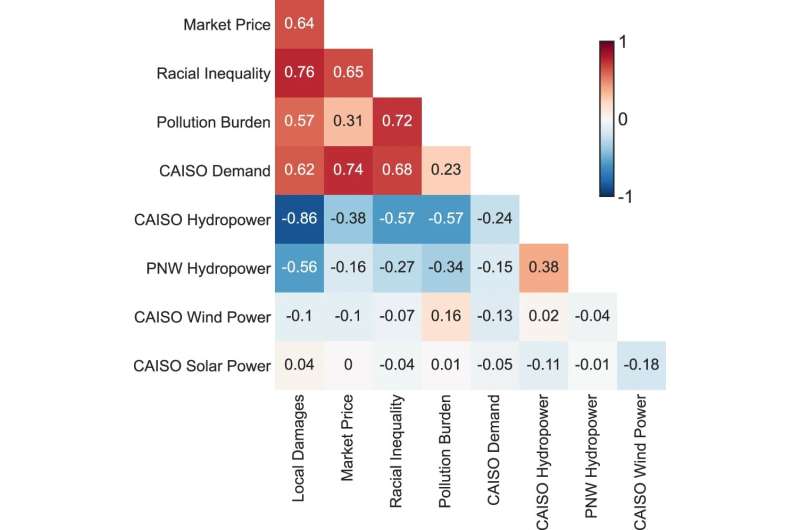This article has been reviewed according to Science X's editorial process and policies. Editors have highlighted the following attributes while ensuring the content's credibility:
fact-checked
peer-reviewed publication
trusted source
proofread
Drought, heat waves found to worsen West Coast air pollution inequality

A new study led by North Carolina State University researchers found drought and heat waves could make air pollution worse for communities that already have a high pollution burden in California, and deepen pollution inequalities along racial and ethnic lines.
Published in Nature Communications, the study also found financial penalties for power plants can significantly reduce people's pollution exposure, except during severe heat waves.
"We have known that air pollution disproportionally impacts communities of color, the poor and communities that are already more likely to be impacted by other sources of environmental pollution," said the study's lead author Jordan Kern, assistant professor of forestry and environmental resources at NC State. "What we know now is that drought and heat waves makes things worse."
For the study, researchers estimated emissions of sulfur dioxide, nitrogen oxides and fine particulate matter from power plants in California across 500 different scenarios for what the weather could look like in future years, which they called "synthetic weather years."

These years simulated conditions that could occur based on historical wind, air, temperature and solar radiation values on the West Coast between 1953 and 2008. Then by using information about the location of power plants in California and how much electricity they would be generating under different weather conditions, they estimated air pollution within individual counties.
They saw the worst air pollution in the hottest, driest years, which Kern said is due to the demand for more air conditioning during hot years. In addition, drought can impact the availability of hydropower. The excess electricity has to come from somewhere else, which is where fossil fuel plants come in.
"One of the things we were interested in was teasing apart the relative roles of drought, which can be chronic, lasting for months or years, versus heat waves, which can happen like a flash in a pan," Kern said. "We found drought is a driver of chronic pollution exposure, but heat waves are responsible for these incredible spikes in emissions in a short period of time."
They also saw that counties with a higher existing pollution burden were disproportionately impacted by pollution during drought and heat waves. Counties that were more diverse by race and ethnicity were also far more likely to be impacted by increased emissions from power plants during droughts and heat waves.
"The more diverse your county is by race and ethnicity, the more likely you are to be impacted by air pollution on an annual basis," Kern said. "During a drought, the relationship is more pronounced."
When they simulated the impact of three different policies that taxed power generators for emitting air pollution locally, overall, or both, they found that penalties helped reduce pollution health damages in more than 99% of days. However, during extreme heat waves, penalties failed to reduce emissions.
"Penalties make the more damaging power plants more expensive to operate, while it makes clean power plants comparatively less expensive," Kern said. "It incentivizes the system to switch to rely on more clean power plants, but that stops happening during really massive heat waves. The power operators have no choice but to turn on every power plant. They can't switch from the dirty power plants to the clean ones."
More information: Amir Zeighami et al, U.S. West Coast droughts and heat waves exacerbate pollution inequality and can evade emission control policies, Nature Communications (2023). DOI: 10.1038/s41467-023-37080-0
Journal information: Nature Communications
Provided by North Carolina State University





















